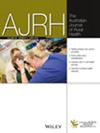Using the Tasmanian Palliative and End of Life Care Policy Framework (2022) to assess service delivery in a rural general practice
Abstract
Aims
This commentary uses the Tasmanian Palliative and End of Life Care Policy Framework (2022; the TPE Framework) to reflect upon palliative care services delivered by a rural Tasmanian general practice.
Context
Rural populations have challenges in accessing many healthcare services, including palliative care. General practitioners (GPs) and other primary healthcare workers are frequently relied upon to deliver palliative care in rural Australia. Palliative care is often needed before the end-of-life phase and patients prefer this to be delivered in the community or at home. GPs face challenges and barriers in continuing to deliver home-based palliative care services.
Approach
All Medical Benefit Scheme billings for after-hours or home-based palliative care provided by the practice, between September 2021 and August 2022, were identified and patient demographic and clinical details collated. To further understand this data, nine GPs were surveyed to explore their attitudes to provision of palliative care service to the local rural communities they serve. These data highlighted several priority areas of the TPE Framework. The TPE Framework is used here to add to the shared understanding of palliative care service delivery in a rural community, and to see if GP's responses align with the priorities of the TPE Framework. Of the 258 after-hours and home-visits delivered over a 12-month period, almost 58% (n = 150) were for palliative care. Patients receiving palliative care were generally older than non-palliative patients visited (79.9 years vs. 72.0 years respectively; p = 0.004). Patients not at imminent risk of death (64.0%) were more frequently recipients of home-visits. Of the nine GPs responding to the survey, most intended to continue home visits for palliative patients. Disincentives to providing palliative care during home visits included a lack of time during the day (or after hours), low levels of interdisciplinary coordination or role-definition, and inadequate remuneration.
Conclusion
Existing frameworks can be used as an implementation and evaluation guide to help understand local palliative care services. Using a Framework, a rural general practice in Tasmania reflected on their provision of palliative care services. Providing holistic palliative care services from a rural general practice is desirable and achievable with a coordinated, team-based approach. Access to and integration with specialist services remains a key component of community-based palliative care pathways.

 求助内容:
求助内容: 应助结果提醒方式:
应助结果提醒方式:


